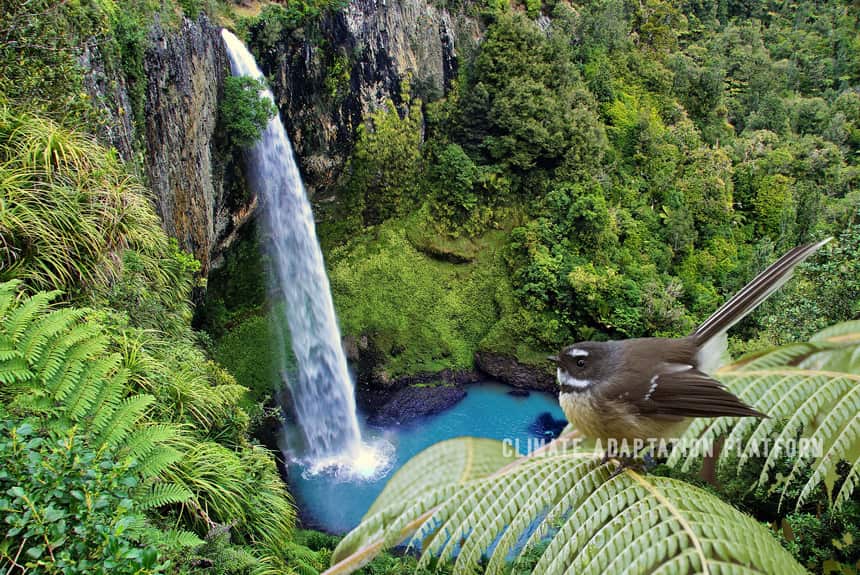Conservation efforts in New Zealand are mainly focused on eradicating non-native or exotic species. However, in addition to the invasion of exotic species and habitat fragmentation due to the destruction of habitats, climate change poses an additional threat that could reduce biodiversity.
The paper, Climate-change impacts exacerbate conservation threats in island systems: New Zealand as a case study, published in Frontiers in Ecology and the Environment journal, found that climate change can increase the effects of invasive species, habitat loss, and changes in land use in island ecosystems like New Zealand.
The study also stresses the importance of collecting and maintaining long-term data to improve response to climate change.
The paper presents New Zealand’s terrestrial biota, the country’s collection of plants and animals, which like many archipelagos, consists of a large percentage of endemic or native species, “80% of vascular plants, 86% of molluscs, 81% of arthropods, 60% of vertebrates, 36% of mosses and liverworts, and 30% of lichens are native to the country”.
Climate change poses a risk to the country’s flora and fauna. While there are no examples of climate-induced extinction in New Zealand, evidence worldwide indicates climate change increases extinction risk. More frequent and extreme weather, such as stronger typhoons, prolonged droughts and dry conditions, a warming climate, and sea level rise, can alter species interactions, food availability, and predator distributions, which could increase the risks of extinction.
Large-scale eradication of invasive species is considered an effective way to protect threatened biodiversity in the country. Still, it is unclear whether conservation gains through predator management or removal will be successful without addressing climate change.
This is seen, for example, in New Zealand’s native bush response to bushfires. The study’s co-author, University of Auckland ecologist Cate Macinnis-Ng observes, “New Zealand species tend to be less flammable, and the non-natives definitely burn more, but natives also don’t have the adaptations to recover after a fire” (Allot, 2021).
Invasive Australian bush species make places like Abel Tasman National Park more prone to fires.
“They’ve evolved to actually have their seed pods open after a fire, it’s part of their life cycle. New Zealand plants just die”, Ng says (Allot, 2021).
Allot (2020) says that wilding pines, considered invasive trees in New Zealand’s high country, are often blamed for fuelling forest fires. For example, two big forest fires in Mackenzie District, in the country’s South Island, in 2020 grazed through 5360 hectares in Lake Ōhau village, including nearly 50 houses and 3000 hectares in Lake Pukaki. Farmers blamed the wilding pines for these fires. The Government responded by committing over $100 million for over four years to control these invasive conifers, which cover more than 1.8 million hectares in the country.
Wilding conifers are also a significant threat to New Zealand’s ecosystem. Apart from spreading quickly at a rate of 5% per year, they reduce water yields by about 40%, which takes away water for irrigation, hydropower generation, and aquatic ecosystem (Allot, 2020).
The paper also points out that Māori knowledge can help with the country’s conservation efforts. Māori oral histories passed on from many generations for several centuries holds a wealth of information on climatic condition as opposed to the relatively recent records maintained by European settlers. For instance, the Māori calendar that guides them on when and where to gather food sources, and plant and harvest crops, has been developed over centuries of observations.
Increased understanding of climate change’s direct and indirect impacts on New Zealand’s ecosystem and closing knowledge gaps using other Western data sources and research centres, combined with the Māori knowledge, will help improve its conservation management in the country and different island ecosystems.
Sources:
Macinnis-Ng, C., Mcintosh, A., Monks, J., Waipara, N., White, R., Boudjelas, S., Clark, C., Clearwater, M., Curran, T., Dickinson, K., Nelson, N., Perry, G., Richardson, S., Stanley, M., & Peltzer, D. (2021, February 9). Climate-change impacts exacerbate conservation threats in island systems: New Zealand as a case study. Frontiers in Ecology and the Environment. Retrieved from https://esajournals.onlinelibrary.wiley.com/doi/10.1002/fee.2285
Allot, A. (2021, February). Efforts to control invasive pests could be in vain without climate consideration. Stuff. Retrieved from https://www.stuff.co.nz/environment/climate-news/124219484/efforts-to-control-invasive-pests-could-be-in-vain-without-climate-consideration
Allot, A. (2020, December 18). NZ testing cheaper, more effective way to detect wilding pine infestations. Stuff. Retrieved from https://www.stuff.co.nz/environment/climate-news/123761663/nz-testing-cheaper-more-effective-way-to-detect-wilding-pine-infestations



Leave a Reply